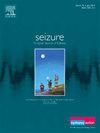The clinical profile of adult-onset idiopathic generalised epilepsy
IF 2.7
3区 医学
Q2 CLINICAL NEUROLOGY
引用次数: 0
Abstract
Objective
Idiopathic generalised epilepsies (IGE) tend to begin in childhood or adolescence, whereas adult-onset presentations are less frequently observed. In this study, we describe the disease course of a cohort of patients with adult-onset IGE.
Methods
In this retrospective observational study, we evaluated clinical features, seizure outcomes, and antiseizure medication (ASM) prescribing trends in a cohort of IGE patients with seizure onset aged 18 years or older.
Results
In a cohort of 425 IGE patients, we identified 55 with adult-onset IGE (12.9 %). Forty-nine patients (89.1 %) experienced seizure onset between ages 18 and 30 years, while the remaining six patients (10.9 %) had onset after the age of 30 years. Eleven patients were initially diagnosed with focal epilepsy (20 %). Most patients (98.2 %) initially presented with generalised tonic-clonic seizures (GTCS). Epilepsy with generalised tonic-clonic seizures alone (GTCA) was the most common syndrome (65.4 %). Thirty-five patients (63.6 %) were treated with ASM monotherapy, 17 (30.9 %) with polytherapy, and three (5.4 %) were not taking any ASM. Lamotrigine, levetiracetam (38.2 %), and valproate (27.3 %) were the most prescribed ASMs. At last clinical review, 40 patients (72.7 %) were seizure-free (no seizures for ≥12 months), including those with absence seizures and myoclonic seizures, and 46 were free of GTCS for a mean duration of 6.2 years (range 1–21 years). Eight patients (14.5 %) had drug-resistant epilepsy (DRE). Eight patients attempted ASM withdrawal, with seizure recurrence occurring in six (75 %), with the period off ASM ranging from one week to 26 years.
Significance
IGE should be considered as a possible diagnosis in people who first present with convulsive seizures in adulthood, particularly those aged between 18 and 30 years with normal neuroimaging. Adult-onset IGE has a good prognosis overall, with most people becoming seizure-free, although the risk of seizure recurrence appears to be high after ASM withdrawal. A minority develop DRE and require polytherapy with ≥2 ASMs.
成人发病特发性全身性癫痫的临床概况
目的特发性全身性癫痫(IGE)往往开始于儿童或青少年时期,而成人发病的表现较少观察到。在这项研究中,我们描述了一组成人发病IGE患者的病程。方法在这项回顾性观察性研究中,我们评估了一组18岁及以上癫痫发作的IGE患者的临床特征、癫痫发作结局和抗癫痫药物(ASM)处方趋势。结果在425例IGE患者中,我们确定55例为成人发病IGE(12.9%)。49例(89.1%)癫痫发作年龄在18 ~ 30岁之间,其余6例(10.9%)癫痫发作年龄在30岁以后。11例患者最初诊断为局灶性癫痫(20%)。大多数患者(98.2%)最初表现为全身性强直-阵挛性发作(GTCS)。癫痫合并全身性强直-阵挛发作(GTCA)是最常见的综合征(65.4%)。单纯ASM治疗35例(63.6%),联合ASM治疗17例(30.9%),未联合ASM治疗3例(5.4%)。拉莫三嗪、左乙拉西坦(38.2%)和丙戊酸钠(27.3%)是处方最多的asm。在最后的临床回顾中,40例患者(72.7%)无癫痫发作(≥12个月无癫痫发作),包括失神性癫痫发作和肌阵挛性癫痫发作,46例患者无GTCS,平均持续时间为6.2年(1-21年)。8例患者(14.5%)有耐药癫痫(DRE)。8例患者试图停药,其中6例(75%)癫痫复发,停药时间从1周到26年不等。对于在成年期首次出现惊厥发作的患者,特别是18 - 30岁神经影像学正常的患者,应考虑将ige作为一种可能的诊断。成人发作的IGE总体上预后良好,大多数人无癫痫发作,尽管ASM停药后癫痫复发的风险似乎很高。少数患者发展为DRE,需要多重治疗≥2次asm。
本文章由计算机程序翻译,如有差异,请以英文原文为准。
求助全文
约1分钟内获得全文
求助全文
来源期刊

Seizure-European Journal of Epilepsy
医学-临床神经学
CiteScore
5.60
自引率
6.70%
发文量
231
审稿时长
34 days
期刊介绍:
Seizure - European Journal of Epilepsy is an international journal owned by Epilepsy Action (the largest member led epilepsy organisation in the UK). It provides a forum for papers on all topics related to epilepsy and seizure disorders.
 求助内容:
求助内容: 应助结果提醒方式:
应助结果提醒方式:


